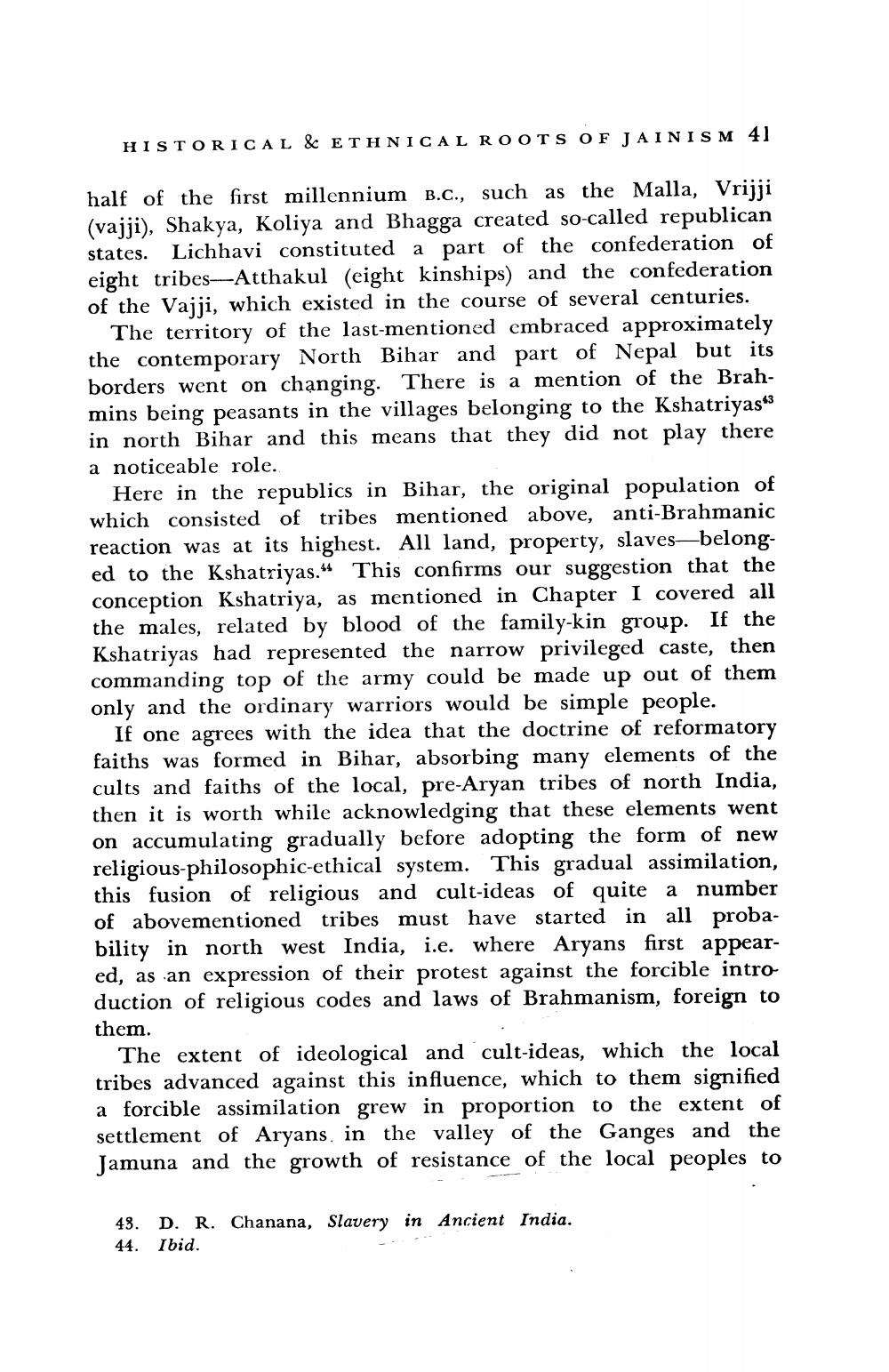________________
HISTORICAL & ETHNICAL ROOTS OF JAINISM 41
half of the first millennium B.C., such as the Malla, Vrijji (vajji), Shakya, Koliya and Bhagga created so-called republican states. Lichhavi constituted a part of the confederation of eight tribes-Atthakul (eight kinships) and the confederation of the Vajji, which existed in the course of several centuries.
The territory of the last-mentioned embraced approximately the contemporary North Bihar and part of Nepal but its borders went on changing. There is a mention of the Brahmins being peasants in the villages belonging to the Kshatriyas* in north Bihar and this means that they did not play there a noticeable role.
Here in the republics in Bihar, the original population of which consisted of tribes mentioned above, anti-Brahmanic reaction was at its highest. All land, property, slaves—belonged to the Kshatriyas." This confirms our suggestion that the conception Kshatriya, as mentioned in Chapter I covered all the males, related by blood of the family-kin group. If the Kshatriyas had represented the narrow privileged caste, then commanding top of the army could be made up out of them only and the ordinary warriors would be simple people.
If one agrees with the idea that the doctrine of reformatory faiths was formed in Bihar, absorbing many elements of the cults and faiths of the local, pre-Aryan tribes of north India, then it is worth while acknowledging that these elements went on accumulating gradually before adopting the form of new religious-philosophic-ethical system. This gradual assimilation, this fusion of religious and cult-ideas of quite a number of abovementioned tribes must have started in all probability in north west India, i.e. where Aryans first appeared, as an expression of their protest against the forcible intro duction of religious codes and laws of Brahmanism, foreign to them.
The extent of ideological and cult-ideas, which the local tribes advanced against this influence, which to them signified a forcible assimilation grew in proportion to the extent of settlement of Aryans, in the valley of the Ganges and the Jamuna and the growth of resistance of the local peoples to
48. 44.
D. R. Chanana, Slavery in Ibid.
Ancient India.




